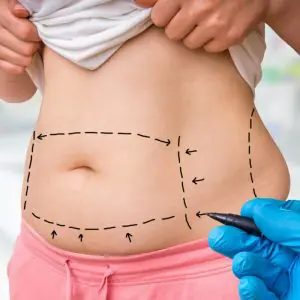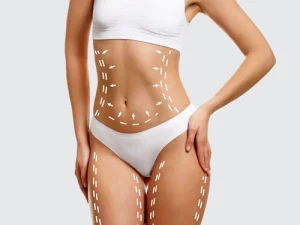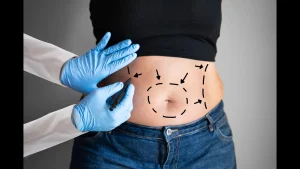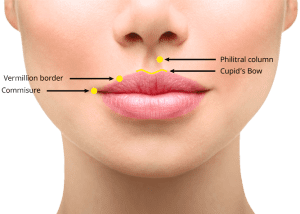Introduction about the Nose Tip Refinement
Tip-shaping or refinement is often a desired outcome discussed during consultations for cosmetic nasal surgery. However, addressing the nose tip presents the rhinoplasty surgeon with a distinctive set of challenges, encompassing both functional and aesthetic considerations. A comprehensive understanding of these challenges is crucial to ensuring a successful outcome. Unfortunately, dissatisfaction with nasal tip appearance or functionality is a common factor prompting patients to seek secondary or revision rhinoplasty procedures. A surgeon’s grasp of the anatomical intricacies of the nasal tip is essential, enabling them to skillfully execute the necessary surgical techniques to achieve the desired aesthetic enhancements while preserving optimal functionality.
Objectives:
Examine the pertinent anatomy essential for executing nose tip refinement surgery.
Elaborate on the mechanisms governing nasal tip support and elucidate the impact of diverse surgical techniques on tip support.
Condense surgical principles and delineate specific techniques frequently utilized in nasal tip rhinoplasty.
Provide an overview of post-surgical care for patients undergoing rhinoplasty with a focus on nose tip refinement procedures.

What is a Nose Tip?
The nasal tip is a pyramid-shaped structure extending perpendicularly from the facial plane. Its key anatomical component is the unit formed by the paired lower lateral or alar cartilages. Positioned above the alar creases on either side of the nose, the lateral crura sit alongside each other, forming the structure of the columella, while the domes, or intermediate crura, lie between the medial and lateral crura, underlying the tip-defining point of the nose. Collectively, the paired alar cartilages are often conceptualized as a tripod structure or an “M-arch,” with the domes at the pinnacle and the bilateral lateral and paired medial crura forming the arms of the tripod or arches. This configuration not only supports the position of the tip but also contributes to structural support for the nasal valves within the nostrils. Understanding the correlation between the lower lateral cartilages and the external appearance of the nasal tip requires experience and challenges the surgeon to develop heightened three-dimensional perceptual abilities.
The arch of the alar cartilages is spatially supported through attachments to various structures, playing a vital role in maintaining support in the nasal tip. Recognizing the mechanisms of nasal tip support is fundamental to successful rhinoplasty. Major tip support mechanisms encompass factors such as the shape, size, and strength of the alar cartilages, the attachment of the medial crura to the caudal septum, and the connection of the cephalic margins of the lower lateral cartilages to the caudal borders of the upper lateral cartilages, known as the scroll region. Additionally, minor tip support mechanisms include the anterior nasal spine, lateral sesamoid cartilages, interdomal ligaments, caudal membranous septum, dorsal septum, and the skin and soft tissue envelope overlying the nasal tip. The importance of each support mechanism may vary among individuals.
Disruption of the mentioned structures can predictably impact nasal tip support and projection. In general, adequate tip support must be reestablished at the conclusion of a rhinoplasty operation to avoid a range of secondary problems, both aesthetic and functional, stemming from overaggressive manipulation. Assessing preoperative support involves examining tip recoil, studying preoperative photographs, and understanding patient factors affecting tip support, such as ethnicity, skin thickness, individual anatomy, and previous surgical procedures or trauma.
A crucial anatomical concept to grasp is that the alar rims consist solely of soft tissue without any cartilaginous structure due to the cephalic curvature of the lower lateral cartilages. Surgeons must consider the impact of alterations made to the alar cartilages on the caudal alar margins, recognizing their lack of robust support. Failure to acknowledge this has implications for both aesthetics and function. Aesthetically displeasing outcomes, such as upward migration of the alar margins or alar retraction, can occur. From a functional perspective, damage to the external nasal valve may lead to postoperative breathing problems.

Postoperative Care of Nose Tip Refinement Procedure
In the immediate aftermath of the procedure, the nasal tip is supported with tape while a thermoplastic cast is placed over the dorsum. Should there be extensive dissection of the lower lateral cartilages, lateral wall splints are applied across the sidewall. All nasal or septal dressings are typically removed on postoperative day 7. It’s crucial to counsel the patient regarding nasal tip swelling, which often represents the most significant aspect of recovery from their perspective. This swelling gradually resolves over many months to years, with fluctuations influenced by factors such as diet, temperature, and activity level. In cases where problematic postoperative edema persists, targeted interventions like self-massage, nasal exercises, taping, or physician-administered steroid injections can be effective. Diligent follow-up, along with judicious application of these interventions, can contribute to enhanced outcomes. Regular follow-up appointments featuring standard digital photography should be scheduled over several years post-surgery. This aids the surgeon in comprehending the correlation between their techniques and the long-term stability of the postoperative results.

Contraindications to Nose Tip Refinement Surgery
Nose tip refinement surgery, also known as tip rhinoplasty, is a cosmetic procedure aimed at enhancing the appearance of the nasal tip. However, like any surgical intervention, there are certain contraindications or factors that may make some individuals unsuitable candidates for this procedure. It’s important for both the surgeon and the patient to carefully consider these contraindications to ensure a safe and successful outcome. Some contraindications include:
- Medical Conditions: Individuals with certain medical conditions, such as uncontrolled diabetes, cardiovascular disorders, or bleeding disorders, may be at an increased risk of complications during surgery.
- Pregnancy: Pregnancy is generally a contraindication for elective cosmetic surgeries. It is advisable to postpone the procedure until after pregnancy and breastfeeding.
- Active Infections: Patients with active infections, such as sinusitis or respiratory infections, may need to wait until they have fully recovered before undergoing nose tip refinement surgery to reduce the risk of complications.
- Psychological Factors: Patients with unrealistic expectations, body dysmorphic disorder, or significant psychological issues may not be suitable candidates for cosmetic surgery. A thorough psychological evaluation is essential before proceeding.
- Age: Surgeons often prefer to perform nose tip refinement surgery on individuals whose facial features have fully matured. Adolescents may need to wait until their nose has stopped growing before undergoing the procedure.
- Allergies: Known allergies to anesthesia or other medications used during the surgery can be a contraindication. Allergies should be thoroughly discussed with the surgeon during the pre-operative consultation.
- Previous Surgeries: Individuals who have undergone multiple nasal surgeries or have significant scarring from previous procedures may face challenges in achieving optimal results with nose tip refinement surgery.
- Smoking: Smoking can impair the healing process and increase the risk of complications. Surgeons often recommend that patients quit smoking before and after nose tip refinement surgery.
- Unrealistic Expectations: Patients with unrealistic expectations or those seeking drastic changes that may compromise nasal function or aesthetics may not be suitable candidates.

The Difference Between a Rhinoplasty and a Nose Tip Refinement Rhinoplasty
Rhinoplasty and Nose Tip Refinement Rhinoplasty are both cosmetic surgery procedures that focus on the nose, but they have distinct differences in terms of their scope and objectives.
-
Rhinoplasty:
Scope: Rhinoplasty, commonly known as a “nose job,” is a surgical procedure that involves reshaping the entire nose.
Objectives: It can address various issues such as altering the size of the nose, changing the shape of the bridge, narrowing nostrils, correcting a deviated septum for improved breathing, or adjusting the angle between the nose and the upper lip.
Procedure: Rhinoplasty involves making incisions, typically inside the nostrils or sometimes on the external nose, to access the cartilage and bone. Surgeons can then sculpt and reshape the nose to achieve the desired aesthetic or functional outcome.
-
Nose Tip Refinement Rhinoplasty:
Scope: Nose Tip Refinement Rhinoplasty is a more focused procedure that specifically addresses the appearance of the nasal tip.
Objectives: The primary goal is to refine and enhance the shape, size, or symmetry of the nasal tip without making extensive changes to the rest of the nose.
Procedure: This procedure may involve reshaping or repositioning the cartilage in the nasal tip, adjusting the projection, or refining the overall contour to achieve a more aesthetically pleasing appearance. The incisions for this type of rhinoplasty are often limited to the nasal tip area.

What are the Benefits of Nose Tip Refinement Procedure?
The Nose Tip Refinement Procedure, a subset of rhinoplasty, offers several potential benefits for individuals seeking to enhance the appearance of their nasal tip. Here are some of the key advantages:
-
Improved Aesthetics:
Symmetry: The procedure can address asymmetry in the nasal tip, creating a more balanced and harmonious appearance.
Proportions: Nose tip refinement allows for adjustments to the size and shape of the nasal tip, ensuring it complements the overall facial proportions.
-
Enhanced Definition:
Refined Contour: The surgery can provide a more defined and refined contour to the nose tip, enhancing its overall appearance.
-
Natural-Looking Results:
Subtle Changes: Nose tip refinement allows for subtle changes that maintain a natural look, avoiding an overdone or artificial appearance.
-
Customization:
Tailored to Individual Needs: The procedure can be customized to address specific concerns or preferences of the patient, allowing for a personalized approach.
-
Minimal Disruption:
Limited Incisions: Nose tip refinement often involves smaller and more targeted incisions, leading to reduced scarring and a potentially faster recovery compared to more extensive rhinoplasty procedures.
-
Functional Improvements:
Breathing: In some cases, the procedure may also address functional issues related to the nasal tip, improving airflow and breathing.
-
Quick Recovery:
Shorter Downtime: Since the focus is on the nasal tip, which is a smaller area compared to the entire nose, patients may experience a quicker recovery with less downtime.

Recovery After a Nose Tip Refinement Surgery
Recovery after a nose tip refinement surgery, also known as tip rhinoplasty, is a crucial phase in achieving the desired results. While the specifics can vary among individuals, the general recovery process typically involves the following key aspects:
-
Immediate Post-Surgery Period:
Observation: After the surgery, patients are monitored in a recovery area to ensure initial stability.
Pain Management: Discomfort is common in the first few days, but pain medication prescribed by the surgeon can help manage this.
-
First Week:
Supporting Plasters: The supporting plasters applied during the surgery must be kept in place until the first follow-up appointment, usually scheduled within the first week.
Limited Activity: Patients are advised to minimize physical activity and avoid strenuous exercises to promote proper healing.
-
Swelling and Bruising:
Ice Packs: Applying ice packs can help reduce swelling and minimize bruising in the initial days.
Elevation: Keeping the head elevated, even while sleeping, can further aid in reducing swelling.
-
Subsequent Weeks:
Gradual Return to Normal Activities: While most patients can return to work or normal activities within a week or two, full recovery may take a few weeks to months.
Avoiding Trauma: Patients are advised to avoid any trauma or impact to the nose during the initial recovery period.
-
Long-Term Care:
Sun Protection: Protecting the nose from excessive sun exposure is crucial during the healing process.
Patience for Final Results: Complete resolution of swelling and the final aesthetic outcome may take several months as the tissues settle.

Conclusion
In conclusion, nose tip refinement surgery emerges as a specialized and effective solution for individuals seeking targeted improvements in the aesthetics of their nasal tip. This procedure, characterized by its focus on symmetry, definition, and proportionality, offers a range of benefits including enhanced facial harmony, increased confidence, and a quicker recovery compared to more extensive rhinoplasty techniques. With the ability to address concerns such as a bulbous or flattened nasal tip, tip rhinoplasty not only transforms the physical appearance but also contributes to a significant boost in emotional well-being. As a minimally invasive option, it provides individuals with the opportunity to achieve natural-looking results tailored to their specific preferences. Consulting with a skilled and experienced plastic surgeon remains crucial in understanding the possibilities and ensuring the best outcomes for those considering nose tip refinement.
source: NLM
FAQs:
How much does it cost to reshape the tip of your nose?
The price of a bulbous tip rhinoplasty, or tip plasty, can vary widely based on factors such as the complexity of the procedure and the surgeon’s level of expertise. Typically, the cost for a bulbous tip rhinoplasty falls within the range of $5,000 to $10,000.
Can you change your nose tip naturally?
The configuration of your nose is predominantly influenced by the structure of your bone and cartilage, and altering it without surgical intervention is not feasible. If you’re dissatisfied with your nose, the most cost-effective and straightforward alternative is to employ makeup techniques to contour and enhance its appearance.
Will the tip of my nose get smaller after rhinoplasty?
In straightforward terms, yes, the tip of your nose will indeed be smaller after undergoing rhinoplasty in San Antonio, especially if your objective is to decrease the size of that specific area of your nose.
Why is my tip so high after rhinoplasty?
It is not uncommon for the tip of the nose to appear too high after rhinoplasty. Skilled rhinoplasty surgeons may intentionally over-rotate the tip during the procedure, anticipating that it will settle into its intended position during the postoperative healing phase. They take into account that swelling can temporarily elevate the appearance of the tip, and the final result is expected to be lower once the healing process is complete.



















